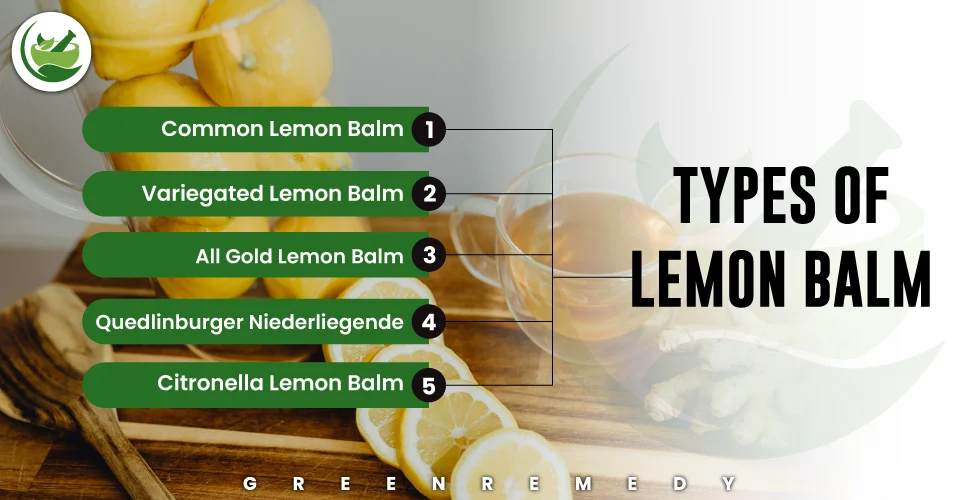
How to make lemon balm tea is more than just a simple kitchen skill — it’s a gateway to relaxation, calm, and overall well-being. If you’ve been searching for a natural, gentle way to melt away stress and quiet your mind, you’re not alone. In a world buzzing with endless notifications, deadlines, and to-do lists, many people are turning to herbal teas for peace in a cup. Among these, lemon balm tea stands out as a soothing, fragrant infusion with centuries of tradition behind it. In this guide, we’ll explore its rich history, health benefits, brewing tips, flavor variations, and the science behind its calming effects. By the end, you’ll be able to confidently prepare a cup that not only tastes wonderful but also works wonders for your body and mind.
Read More: Ultimate Guide to Protein Powders and Shakes for Fitness and Optimal Health
What is Lemon Balm?
Lemon balm (Melissa officinalis) is a perennial herb from the mint family, celebrated for its delicate lemony scent and mild flavor. Native to the Mediterranean region, it has been cultivated for over 2,000 years, traditionally used for calming nerves, aiding digestion, and promoting better sleep.
Unlike the sharp tang of lemons, lemon balm offers a subtle citrus aroma with a gentle sweetness. Its essential oils, including citral, citronellal, and eugenol, are believed to have mood-lifting and muscle-relaxing effects, making it perfect for tea.
Why Lemon Balm Tea is Perfect for Relaxation
When people search for how to make lemon balm tea, they’re often looking for more than just flavor they want a natural way to calm the mind and ease tension. Lemon balm tea has earned a reputation as one of the most soothing herbal infusions you can sip, and here’s why it works so well for relaxation.
1. Naturally Calms the Nervous System
Lemon balm contains compounds such as rosmarinic acid and citral, which are believed to help balance the body’s stress response. These plant chemicals gently interact with the brain’s neurotransmitters, promoting a sense of calm without causing grogginess.
2. Reduces Stress Hormone Levels
Some studies suggest that lemon balm may help lower cortisol — the body’s primary stress hormone. This can lead to less physical tension, fewer racing thoughts, and a more peaceful state of mind.
3. Supports Restful Sleep
Lemon balm tea is caffeine-free, making it safe to enjoy in the evening. Its relaxing effects prepare your body for rest, and when combined with other calming herbs like chamomile or lavender, it can enhance sleep quality.
4. Relieves Physical Tension
The mild muscle-relaxant properties of lemon balm may help with tension headaches, tight shoulders, or an upset stomach triggered by stress. Drinking it warm also encourages muscle relaxation through gentle heat.
5. Promotes Mindful Moments
Brewing and sipping lemon balm tea isn’t just about the chemistry — it’s about the ritual. Slowing down to prepare the leaves, inhale the citrusy aroma, and enjoy each sip can be a form of mindfulness that reduces anxiety and helps you feel more present.
Types of Lemon Balm

Explore the Different Varieties of Lemon Balm.
| Type of Lemon Balm | Scientific Name / Variety | Leaf Characteristics | Aroma & Flavor | Common Uses |
| Common Lemon Balm | Melissa officinalis | Bright green, slightly wrinkled, oval leaves | Mild lemon scent with subtle mint undertones | Herbal teas, aromatherapy, culinary dishes |
| Variegated Lemon Balm | Melissa officinalis ‘Variegata’ | Green leaves with creamy-yellow edges | Gentle lemon fragrance, slightly sweeter than common lemon balm | Ornamental gardening, teas, garnishes |
| All Gold Lemon Balm | Melissa officinalis ‘All Gold’ | Golden-yellow leaves, smaller than common type | Light lemon scent, mild flavor | Decorative gardens, fresh herbal infusions |
| Quedlinburger Niederliegende | German cultivar of Melissa officinalis | Compact, low-growing with dense leaves | Strong lemon aroma | Ideal for tea production and herbal medicine |
| Citronella Lemon Balm | Hybrid variety | Bright green leaves, slightly serrated edges | Stronger citrus scent, reminiscent of citronella | Natural insect repellent, herbal blends |
Read More: Health Benefits of Eating Oats and Oatmeal: A Nutritional Boost
The Science Behind Lemon Balm’s Relaxing Effects
The calming properties of lemon balm are linked to its bioactive compounds:
- Rosmarinic acid – Known for its antioxidant and anti-inflammatory effects, it may help reduce cortisol (stress hormone) levels.
- Citral & citronellal – These aromatic oils are linked to improved mood and relaxation.
- Eugenol – A mild muscle relaxant that can help ease tension headaches and muscle tightness.
Clinical studies have found that lemon balm extracts may improve cognitive performance while lowering feelings of anxiety. Drinking it as tea allows you to enjoy these benefits in a soothing, ritualistic way.
Ingredients You’ll Need
To prepare a perfect cup of lemon balm tea, you only need a few basic ingredients:
- Fresh lemon balm leaves (about 1–2 tablespoons, chopped) or dried lemon balm leaves (about 1 teaspoon)
- 1 cup of hot water (filtered for best taste)
- Optional sweeteners – honey, maple syrup, or stevia
- Optional flavor additions – lemon slices, ginger, chamomile, or pepper
How to Make Lemon Balm Tea: Step-by-Step Guide
Brewing the perfect cup of lemon balm tea is simple, but the right technique ensures you get the most flavor and health benefits from this calming herb. Whether you use fresh leaves from your garden or dried leaves from a store, this guide will help you create a soothing, aromatic cup every time.
Step 1: Select High-Quality Lemon Balm
If using fresh lemon balm, choose leaves that are bright green, free from spots, and aromatic when lightly rubbed between your fingers. For dried lemon balm, make sure it’s stored in an airtight container and hasn’t lost its lemony fragrance.
Step 2: Wash and Prepare the Leaves
- Fresh leaves – Rinse gently under cool water to remove dust. Lightly bruise them with your fingers or a spoon to release their essential oils.
- Dried leaves – No washing needed; simply measure the right amount.
Step 3: Heat the Water
Bring your water to just below boiling (around 200°F or 93°C). Avoid using fully boiling water, as this can make the tea taste bitter and reduce the delicate flavor.
Step 4: Steep the Lemon Balm
- Place the leaves in a teapot, mug, or infuser.
- Pour the hot water over the leaves.
- Cover with a lid or saucer to trap the aromatic oils.
- Steep for 5–10 minutes depending on your taste preference — shorter for a lighter flavor, longer for a stronger, more medicinal brew.
Step 5: Strain and Serve
Strain out the leaves and pour the tea into your cup. Add honey for sweetness, lemon for brightness, or mint for a refreshing twist.
Step 6: Relax and Enjoy
Sip your tea slowly, inhaling the steam to take in the calming aroma. This isn’t just a drink — it’s a mini self-care ritual.
Read More: Herbal Remedies for Stress and Anxiety
Tips for the Perfect Cup of Lemon Balm Tea
- Use filtered water for a cleaner taste.
- Avoid over-boiling the leaves, as it can make the tea taste bitter.
- Experiment with blends – lemon balm pairs well with mint, chamomile, lavender, or green tea.
- For iced tea, brew a strong batch, cool it, and pour over ice with lemon slices.
Fresh vs. Dried Lemon Balm Tea: Which is Better?
When learning how to make lemon balm tea, one of the first decisions you’ll face is whether to use fresh or dried leaves. Both offer unique advantages, and the “best” choice often comes down to your taste preferences, availability, and how you plan to use the tea.
1. Fresh Lemon Balm Tea
Flavor & Aroma:
- Fresh leaves deliver a brighter, more vibrant lemony aroma with subtle mint undertones.
- The flavor is lighter and more delicate, perfect for sipping in the afternoon or evening.
Nutritional Benefits:
- Fresh leaves contain higher levels of volatile oils, which may enhance the calming effects.
- Ideal for preserving the natural freshness of the herb.
Best For:
- Immediate use right after harvesting from your garden.
- Those who enjoy mild, refreshing herbal teas.
2. Dried Lemon Balm Tea
Flavor & Aroma:
- Dried leaves have a deeper, slightly earthier flavor.
- The aroma is still pleasant but less citrusy than fresh leaves.
Nutritional Benefits:
- Drying preserves the herb for long-term use, so you can enjoy it year-round.
- Still contains many beneficial compounds, though some volatile oils may be reduced during drying.
Best For:
- Convenience — no need to grow or buy fresh lemon balm every time.
- Stronger, more concentrated brews for medicinal purposes.
Benefits of Lemon Balm Tea

Benefits of Lemon balm tea are more than just a soothing herbal drink — it’s packed with natural compounds that may support your health and well-being. Here are some of its most notable benefits:
1. Promotes Relaxation & Reduces Stress
- Lemon balm contains natural plant compounds that may help calm the nervous system.
- Drinking a warm cup can ease feelings of tension, making it a great choice after a long, stressful day.
2. Supports Better Sleep
- Known for its mild sedative properties, lemon balm tea can be consumed before bedtime to encourage deeper, more restful sleep.
- Often combined with chamomile or lavender for an extra calming effect.
3. Boosts Mood
- Some studies suggest lemon balm can help lift mood and reduce symptoms of mild anxiety.
- Its pleasant aroma alone can have a gentle uplifting effect.
4. Aids Digestion
- Lemon balm tea may help ease bloating, gas, and mild digestive discomfort.
- Its soothing properties make it helpful after heavy or rich meals.
5. Supports Cognitive Function
- Certain compounds in lemon balm may improve alertness and memory while also reducing mental fatigue.
6. Rich in Antioxidants
- Packed with polyphenols and flavonoids, lemon balm tea helps combat free radicals, supporting overall cellular health and immunity.
7. Naturally Caffeine-Free
- A perfect alternative to black or green tea for those who want a relaxing drink without the jitters of caffeine.
Read More: Basil Seeds (Tukmaria) and Their Health Benefits
Flavor Variations for Extra Relaxation
Discover delightful flavor twists to make your lemon balm tea even more relaxing.
1. Lemon Balm & Chamomile
Chamomile’s floral notes pair beautifully with lemon balm, creating an ultra-relaxing bedtime tea.
2. Lemon Balm & Lavender
A fragrant, calming blend that smells like a spa in a cup.
3. Lemon Balm & Peppermint
Perfect for refreshing the mind while still soothing the nerves.
4. Iced Lemon Balm Tea
Brew a strong infusion, let it cool, then pour over ice for a refreshing summer drink.
Best Times to Drink Lemon Balm Tea
- Before Bed – Supports restful sleep.
- Midday Stress Break – Helps clear the mind during work or study.
- After Meals – Aids digestion and reduces bloating.
Tips for Growing Your Own Lemon Balm
For the freshest and most flavorful tea, nothing beats using lemon balm straight from your own garden. This easy-to-grow herb thrives in a variety of settings, from small pots to spacious garden beds.
1. Soil
- Use well-draining soil rich in organic matter.
- Adding compost or aged manure improves both flavor and plant health.
2. Sunlight
- Grows best in full sun to partial shade.
- In very hot climates, a bit of afternoon shade helps protect delicate leaves.
3. Watering
- Keep soil evenly moist but not soggy.
- Water when the top inch of soil feels dry.
4. Harvesting
- Pick leaves before the plant flowers for the most intense flavor.
- Frequent harvesting encourages new, tender growth.
5. Where to Grow
- Perfect for pots, balcony containers, raised beds, or open garden soil.
- If planting in the ground, be aware that lemon balm can spread quickly—container planting can help keep it contained.
Pro Tip: Dry extra leaves in a cool, shaded spot so you can enjoy homegrown lemon balm tea all year round.
Possible Side Effects & Precautions
While lemon balm tea is generally safe for most adults, keep these in mind:
- Pregnancy & breastfeeding – Consult a healthcare provider before use.
- Thyroid conditions – Lemon balm may interfere with thyroid hormone production in sensitive individuals.
- Medication interactions – It may enhance the sedative effects of certain medications.
Pro Tip: Always start with a small amount to see how your body responds.
Read More: What are the Benefits and Negative Effects of Swimming
The Ritual of Tea for Relaxation
Part of the magic of how to make lemon balm tea lies in the ritual. The process of selecting your leaves, heating the water, and slowly sipping can be meditative in itself. Turning tea-making into a mindful practice can multiply its calming benefits.
FAQs About Lemon Balm
Answers to Your Most Common Questions About Lemon Balm.
1. What happens when you drink lemon balm tea?
Drinking lemon balm tea can help calm the mind, reduce stress, and promote better sleep. It may also aid digestion and provide a gentle soothing effect.
2. Does lemon balm tea help with weight loss?
Lemon balm tea is not a direct weight loss solution, but it may support metabolism and reduce stress-related cravings when included in a healthy lifestyle.
3. What part of lemon balm is used for tea?
The leaves of the lemon balm plant are commonly used to make tea, either fresh or dried.
4. When to avoid lemon balm tea?
Avoid lemon balm tea if you are pregnant, breastfeeding, or taking sedatives unless advised by a doctor.
5. Who should not take lemon balm?
People with low blood pressure, thyroid issues, or those on sedatives should consult a healthcare provider before using lemon balm.
Final Thoughts
Learning how to make lemon balm tea isn’t just about mastering a recipe it’s about creating a moment of peace in your day. Whether you sip it to unwind after work, prepare for a restful night, or simply enjoy its gentle citrus notes, lemon balm tea can be a powerful ally in your self-care routine.
So next time you feel the weight of the day on your shoulders, take a few minutes to brew yourself a cup. Breathe in the steam, savor the flavor, and let the calm wash over you one sip at a time.






